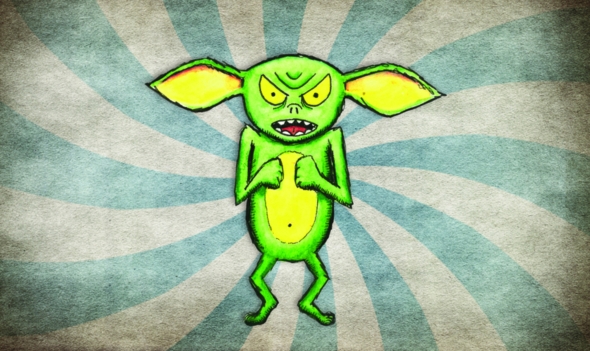Kate Collins-Donnelly is a therapist, psychologist and anger management consultant based in the UK. She currently runs a successful independent consultancy practice which provides cognitive behavioural therapy, counselling, coaching and training.
In this interview, Kate talks about her new workbook, Starving the Anger Gremlin, the extreme gratification of seeing young people learn to control their anger in the midst of often dire situations, and how she deals with her own Anger Gremlin.
The Anger Gremlin is an imaginative concept – where did you get the idea from?
A naughty gremlin sat on someone’s shoulder is an age-old image that many of us can relate to, having seen it in so many forms of literature and film. Personally, I can remember seeing Tom, from the classic children’s cartoon Tom and Jerry, with an angel on one shoulder and a devilish figure on the other whilst deciding whether to chase his archenemy Jerry! I have found that children and young people can easily visualise a gremlin sat on their shoulder, uttering negative or unhelpful thoughts in their ear, and the concept of starving this gremlin developed from there. It became a key part of how I would describe the process of emotional reactions based on principles of cognitive behavioural therapy (CBT) to people of any age. It’s a great visual way to show how if we think or act in a certain way, we can control those emotions that are having a negative impact on us, such as anger, anxiety or stress. I found that people of all ages could really relate to the concept.
I decided to write Starving the Anger Gremlin because I saw the need for it every single day in my work with young people and because young people, parents and practitioners asked me to! The self-help market is full of titles, but I don’t believe there are enough aimed directly at young people, especially in relation to how to manage their anger.
How long have you been working with children and young people, and how did you first get into this area of work?
I developed an interest in psychology and what made humans “tick” as a teenager. I started working with young people through volunteer work approximately 16 years ago, realised how rewarding it could be, and my career developed from there. I now manage a successful private practice that helps children and young people every single day through one-to-one therapeutic support, training workshops, self-help literature and through training parents and a wide range of practitioners on emotional management issues experienced by children and young people.
What has been your experience of working with young people on anger management – what are the biggest challenges? What amazing results have you witnessed?
Working with young people on anger management has been an extremely rewarding experience because I have been privileged to see young people overcome their difficulties and, in many cases, totally turn their lives around. The biggest challenge for the young people themselves is when they are trying to work out how to deal with their anger in response to extremely difficult circumstances, which they have to contend with on a daily basis, such as cyberbullying, witnessing domestic violence in the home or witnessing parental substance abuse.
Young people under these circumstances have such a right to feel angry, but the biggest challenge is to find a way to let go of that anger or to express it in a constructive way, especially when the options to move away from the difficult life issues are limited. Every change you witness when working with young people is amazing no matter how large or small. I have worked with young children who have learnt to stop their angry acting-out behaviours at home with their parents or siblings; young people who have stopped getting into fights at school; young people who have changed their attitudes towards violence in relationships or towards gang violence; young people who have acknowledged their anger regarding the bullying they went through, and have learnt how to no longer turn that anger against themselves and move on from it, and much more. The list of amazing results is endless and the young people themselves need to be very proud of their achievements.
Do you have any gremlins of your own? How do you manage them?
We all have our gremlins, even those of us with a good understanding of this emotional management malarkey! And I’m no exception. In fact, in and amongst the pictures of gremlins on our office walls that children and young people have drawn sits a picture of mine! My gremlin is microscopic these days as I’ve learnt to starve it that much! However, like anyone else, there are days when I find my gremlin harder to starve. But that’s perfectly normal. As long as we all (myself included!) stick to the CBT-based strategies that work so well, we’ll be able to starve our gremlins most days, which isn’t bad going at all!
I don’t often get angry, though. But if I do, I know the only thing I can control in any situation is my own reaction to it. So that’s what I work on…controlling my reactions and starving my gremlin!
Read a Preview of Starving the Anger Gremlin »
Copyright © Jessica Kingsley Publishers 2012.
